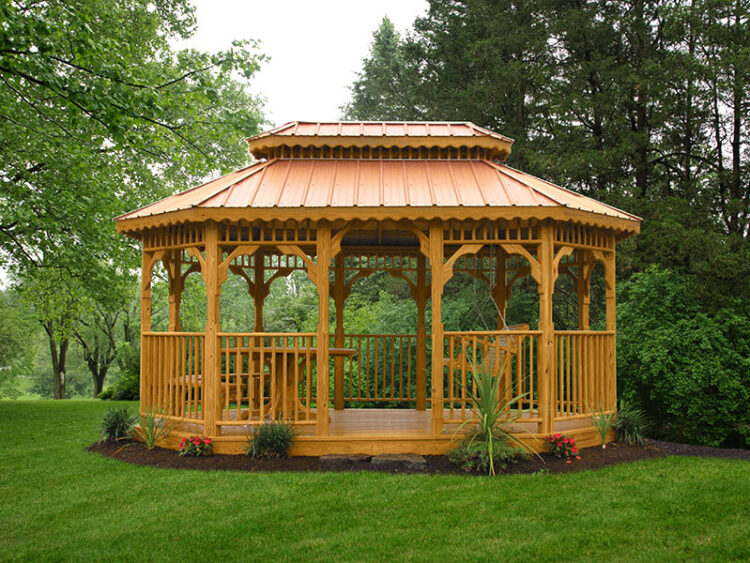In seeking to distinguish their offerings, boutique hotels and upscale resorts are turning to amenity investments that offer both beauty and purpose. Elegant outdoor wooden gazebos combine refined aesthetic with resilient outdoor functionality, making them a natural choice for extending guest space beyond the room. Strategically placed, these gazebos become the stage for alfresco dining, quiet reading, sunset events, or curated photo moments. Buyers in the hospitality sector who familiarize themselves with the most visually arresting styles, the best timber grades, and the most thoughtful siting plans unlock impressive guest loyalty and drive attractive yield.
Advantages That Matter to Boutique Developers
Wooden gazebos deliver a suite of hospitality advantages that align with boutique development priorities. Foremost, their attractive silhouette encourages congregation, whether for casual drink, spontaneous conversation, or secluded pause, transforming any garden or terrace into a naturally immersive guest zone. Beyond the curation of human experience, a finely crafted gazebo introduces compelling architectural texture, framing and accenting neighbouring foliage, water, or tiled edge in lyrical proportion. From a cost perspective, a bespoke structure replaces the need for costly extensions or restrictive permits, offering boutique developers a timeless aesthetic uplift for a steadily quantifiable uplift in perceived guest value.
Beyond their obvious charm, wooden gazebos can be fine-tuned for specific environments, architectural motifs, and strategic purposes. When crafted from carefully selected and finished timber, these structures shrug off the harshest elements, insulate against insect interference, and inhibit moisture damage, promising aesthetic integrity through the passage of decades. They also pivot easily between uses: a cool retreat for afternoon cocktails, a sunlit antipasto terrace, or a festive venue for petite gatherings under the stars. In the realm of boutique hospitality, a wooden gazebo is elevated from mere shelter to brand amplifier, imbuing the guest experience with deliberate, tactile storytelling.
Selecting the Right Outdoor Wooden Gazebo Style
Picking the perfect wooden gazebo requires a balance of visual harmony, substance, scale, and practical service. Architectural genres vary from elaborate, spindle-and-cornice Victorian motifs to the taut, quiet presence of modern minimalism, each carrying a unique echo. Within boutique hospitality, the gazebo must be synonymous with the property’s soul: elaborate mouldings and cupolas will deepen the narrative of a restored colonial retreat, while stark, horizontally ribbed timber entices guests at a glass-and-concrete weekend hideaway.
Choosing the right material has a lasting impact. Opt for premium hardwoods, pressure-treated timber or FSC-certified boards, which strike a balance between endurance and beauty. Coatings—such as penetrating stains, clear sealers, or coordinated paint—boost moisture resistance while ensuring the structure complements planting beds or the building’s palette. Dimensioning demands verify the projected number of guests, the gazebo’s purpose, and the option for future adaptations. B2B procurement managers need to weigh visual goals against durability, verifying that the gazebo fits smoothly into event flow and circulation.
Planning the Location
Strategic alignment of a wooden gazebo leverages beauty for practicality. Locate the structure to draw guests along well-composed routes, frame sought-after vistas or harvest shelter from overhanging boughs. In boutique hospitality, a gazebo adjacent to formal gardens, pool landscapes or elevated terraces engages guests with highlighted external amenities while preserving discreet enclosure. Evaluating local wind corridor maps, assessing solar access at different times, and mapping universal routes to or from the gazebo all sharpen the final design, deepening user enjoyment and operational efficiency.
Room to breathe around the gazebo supports hotel staff efficiency. Carded walkways, closeness to service stub areas, and clear paths for cleaning crews allow everything to run with minimal fuss. Low hedges, terracotta-barrel planters, or the gentle murmur of a recirculating stream work with the gazebo rather than overclock it, stitching the landscape together. Sited with care, a timber pavilion steps off the page from standard furnishings, advancing both guest delight and the property’s perceived worth.
Buying a timber gazebo means pencilling in both sticker price and upkeep math. The priciest cedar, mahogany, or Ipe and its premium finishes usually cost several hundreds in the billfold now, yet the cost-curve flattens over time: fewer water-borne finishes, zero recurring rot boards, no insect birdsong. Bolt-together slip-together kits, meanwhile, shrink the hired crew clock, saving labor nimbleness and shrinking grey-area subs on the price tag. For a B2B hospitality buyer, flicking those columns forward means the returns and the line items pull focus together triple time.
Stewards make or break timber. A gaze twice a year for rot pockets, and a feather-bristle clear of gutters, trumpet vine, your debris keeps water sipping boards. A water-barrier topcoat semi-annually, gutted planter intermediary seal on planted dirt, and corrosion-free screws lineup keeps both eyelines and function glowing. By clipping that charted plan into the property’s monthly crop, the operations GM can kiss off unpainted patience and keep the pavilion racked, photogenic, and guest-ready at the drop of a sunbeam.
Elevating Guest Delight and Property Worth
Outdoor wooden gazebos offer more than shade; they enrich the guest journey and boost the intrinsic value of the property. Travelers are naturally attracted to attractive, cross-functioning open-air retreats that invite lingering, photo-sharing, and conversation. By featuring a lofted wooden pavilion, a boutique hotel gains a signature landmark that pops in glossy brochures, scroll-stopping Instagram posts, and crafted guest itineraries. When rivals offer the same skyline view, the gazebo’s architecture becomes the unique tale that lingers in the mouth of word-of-mouth marketing—memorable, and unmistakably tied to the hotel’s brand.
Designed thoughtfully, a gazebo can adapt to changing guest needs with almost no disruption to existing landscapes. It becomes a stage for intimate weddings, a setting for candlelit al fresco dinners, or simply a shaded perch for sipping coffee—all expandable square footage that keeps the lawn intact. This versatility feeds into year-round programming and fuels secondary revenues at weddings, upsells at in-house dining, or weekend community picnics. Property stakeholders thus acquire a disciplined return: a feature that heightens moment-to-moment guest joy and a number on the appraisal that quietly climbs.
Placing the right rustic gazebo in the optimal sunny yet sheltered spot thus marries guest pleasure with the disciplined productivity of property management.
To summarize, striking wooden gazebos deliver a curated combination of aesthetic charisma, practical utility, and enduring asset protection for boutique hospitality ventures. When the correct architecture, timber selection, and siting techniques are employed, operators gain open-air venues that uplift guest satisfaction and streamline daily operations. Meticulous design, preventative care, and harmonious blending with overall site schematics reaffirm gazebos as eco-conscious, visually arresting enhancements, securing enduring viability for boutique hotels and resorts.










